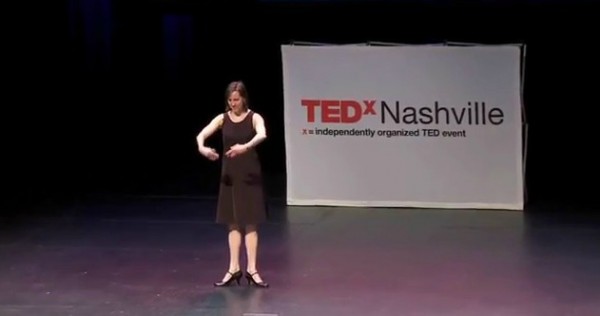Jennifer Homans explains the significance of ballet in our society. Image: video excerpt from YouTube TED Channel.
Former ballerina, historian and dance critic, Jennifer Homans has been passionate about ballet her entire life. She began her dancing career at 8 and danced professionally until the age of 26. Her latest book, Apollo’s Angels
reveals her insights on the history of ballet.Her views are fascinating, to say the least. After 15 years of intense investigation, she has arrived to interesting conclusions. Follow the article and video below.
The History of Ballet
A dance critic for The New Republic, Homans earned her Ph.D. in modern European history at New York University, where she is a distinguished scholar-in-residence, teaching the history of ballet. In an earlier incarnation, she was a professional dancer, performing with the Chicago Lyric Opera Ballet and the San Francisco Ballet [and the Pacific Northwest Ballet].
“When I was myself a dancer looking for things to read, I did not find a cultural history that was broad about politics, ideas and the arts as well as about dance,” Homans said in a phone interview about Apollo’s Angels, which was 15 years in research and writing. “So when I stopped dancing and became an historian, over time I realized I had the equipment, the training and experience in dance and history, to write the book I always wanted to read.”
Rita Kohn‘s original interview can be found here by following this link.
In her book, Apollo’s Angels, the ballet critic asks:
Why should we care about ballet?
Jennifer Homans tells us what ballet means to her, as a dancer and as a historian, and why she has devoted her life to understanding this beautiful and civilizing art.
After a short, yet intense career as a ballet dancer… she went back to school and earned a B.A. an M.A. and a PhD.
Courtesy of YouTube TEDxTalks Channel.
Jennifer Homans shares her integrated perspective on the history of ballet, which includes all aspects of life: politics, social conventions, etiquette, science, religion and, as you just listened, military training!
As she explores the meanings behind the different components of ballet: the five positions, the degree of discipline, the sense of nobility, the ability to lose oneself in the movement during class and performance comes together and sounds true in my own experience.
What do you think of Ms. Homans’ ideas? Did you find her views interesting and worth sharing?
Ballet was never just a set of physical exercises or positions.
It was always a set of beliefs, an aspiration to nobility, an aspiration to the extraordinary, to the merveilleux.
It was a way of life. And it is today a connection to the past, a direct connection, both to Louis [XIV] and to Marie Taglioni, and to the worlds that they lived in.
It is a living, moving history.
-Jennifer Homans
Please “Share” below with friends who appreciate thought provoking concepts as these and a fresh take on the origins of classical ballet history.



